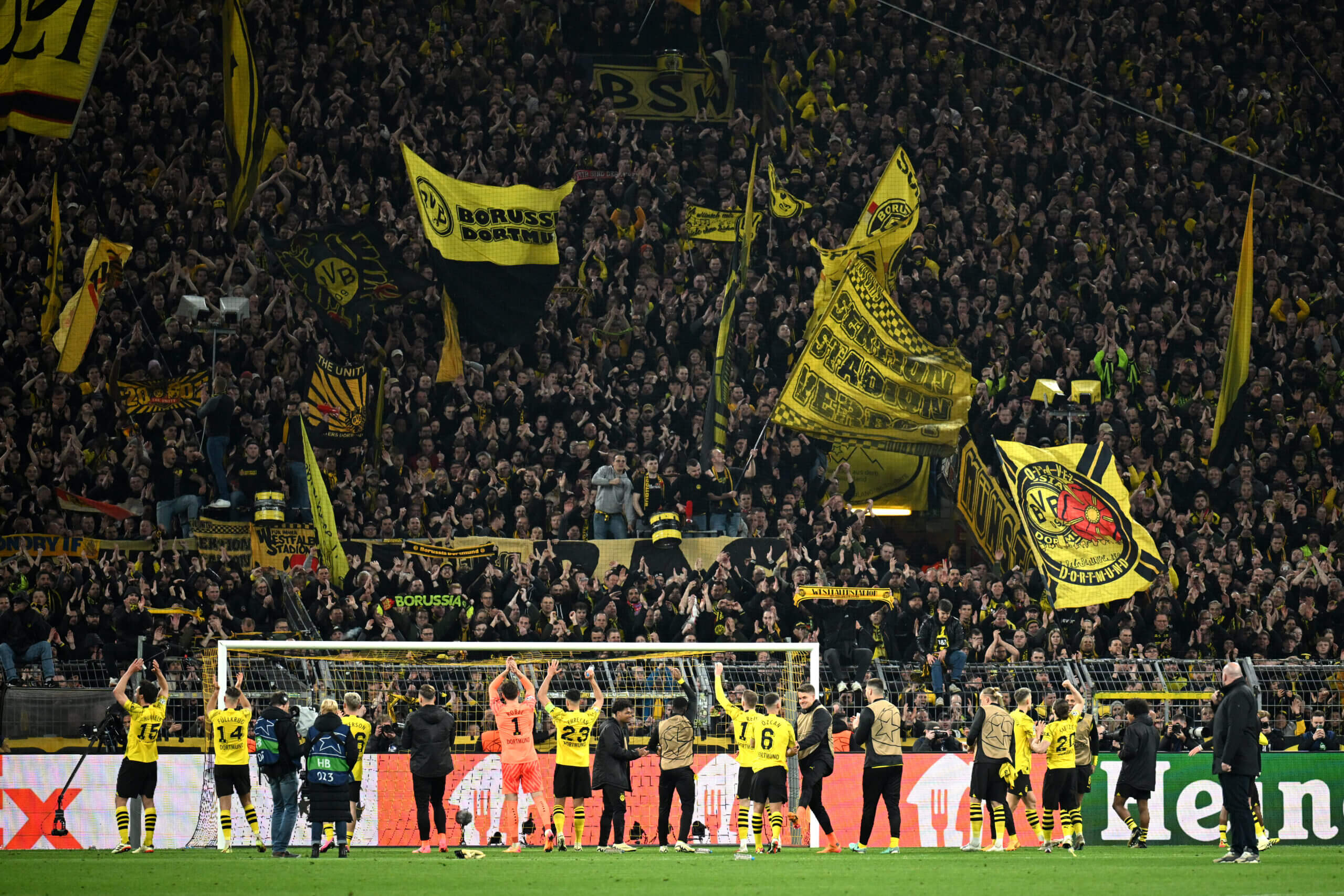The good old days. By the end of Borussia Dortmund’s stirring 4-2 win over Atletico Madrid on Wednesday night, they were what everybody was reminded of.
Dortmund overcame a 2-1 first-leg deficit to win the quarter-final 5-4 on aggregate and did so with an emotion and urgency that were once their tenets.
It was so remarkable because it has been increasingly rare. Dortmund sit fifth in the Bundesliga and were eliminated from the DFB-Pokal, the German cup, back in December. It has not been a season to remember. They have lacked consistency, intensity and attacking verve. In the league, they have scored fewer goals than all the sides currently above them.
But their personality in the Champions League has been different all year, and never more so than against Diego Simeone’s battle-hardened side, who were eliminated by goals from Julian Brandt, Ian Maatsen, Niclas Fullkrug and Marcel Sabitzer.
There was connectivity and purpose to Dortmund with the ball — and a healthy desperation to their work without it. It was full of do-or-die ferocity. The old Dortmund. Potent, intense, cranked-to-11 Dortmund.

Marcel Sabitzer celebrates his goal (Leon Kuegeler/Getty Images)
Many had forgotten that this version of the team could exist. Next year will mark a decade since Jurgen Klopp left the club. While not quite a smooth downward curve, that period has seen the club drift further away from the identity Klopp forged. Then, they were a team made famous by their tireless counter-press.
In the years since, that identity has melted away, leaving a side increasingly more individual-led and dependent upon the performances of a few star players. Jadon Sancho, Erling Haaland and Jude Bellingham were all talents who allowed the spectacle to survive, to an extent, and ensured that Dortmund’s performance did not drop away completely.
Edin Terzic, the head coach, has been pilloried with this criticism. Terzic’s football is uninspired, his critics suggest, and his teams are only ever as good as the players they contain. And one of his biggest problems, since taking the job permanently in 2022, has been that the quality of his squad has been steadily declining. There is no Haaland or Bellingham anymore. There are some leading lights, but nobody is feared by other teams or enjoyed by the neutrals.
At their worst, Terzic’s Dortmund have been chaotic and porous. But even at their best, they tend to have a business-like quality which, because of a shaky defence, is never entirely convincing.

GO DEEPER
Edin Terzic striving to restore faith that he can be BVB’s perfect long-term leader
This weak identity means that nobody can be sure how they are going to perform week-to-week. Klopp’s Dortmund was a product of the club’s regional environment: heavy industry and the Westfalenstadion’s feverish atmosphere. The symbolism and the synergies were obvious.
Conversely, one of the problems with this Dortmund is how out of place they look. They emerge from the same tunnel and wear the same shirt, but they are not really from the same place.
But the Champions League performances have repeatedly challenged that perception. Terzic’s Dortmund were excellent (for different reasons) in both games against Newcastle United in the group stage. They were terrific at San Siro, too, where they beat AC Milan.
Moreover, those games featured all sorts of notable individual performances which, again, were greatly at odds with the season’s trends and those of this recent era. Nico Schlotterbeck and Mats Hummels have had exceptional tournaments. Brandt, Sabitzer and Sancho have all had profound influence, too.
And Tuesday night was the most vivid example of that strange duality. Schlotterbeck made two of the finest last-ditch tackles you could hope to see; one in the first half, another in the second. Hummels, unlucky to be credited with an own goal, strutted in defence and, with an outrageously flamboyant pass, was the architect of the game’s first goal. Sabitzer and Brandt were equally excellent: dynamic and vertical, determined to impose themselves on the evening.

Mats Hummels scores an unfortunate own goal (Odd Andersen/AFP via Getty Images)
The combination between the two that led to Fullkrug heading Dortmund level on aggregate might have been the best bit of play across all 180 minutes of the tie. Sancho was mature with the ball. Maatsen was highly effective. As were Julian Ryerson and Emre Can.
The broader point is that everything worked. Somehow. One of Dortmund’s biggest deficiencies is that they cannot control the ball. They lack an orchestrating No 6 capable of setting the rhythm of a game and ensuring that it does not just ricochet back and forth between the goal lines. It is a fatal flaw, and for 20 second-half minutes, when Atletico scored twice and seemed to have seized control, it appeared to have cost them once more. But through force of will, the rare alignment of the star players that Terzic does possess, and quick surges of power tempered with just enough calm and class, they were able to make it not matter.
Overpowering flaws? Outworking weaknesses? Relentlessly pursuing an opponent presumed to be stronger and then finding enough class, when they are dazed and confused, to put them away? Those are typical Dortmund qualities that belong to a different era. That they happen to have re-emerged at this point of the season has no impact on the broader conversation around Terzic, nor the wider concerns about his squad and its future.
But on Tuesday night, no wonder the Westfalenstadion bounced and burned like it used to.
(Top photo: Stuart Franklin/Getty Images)

